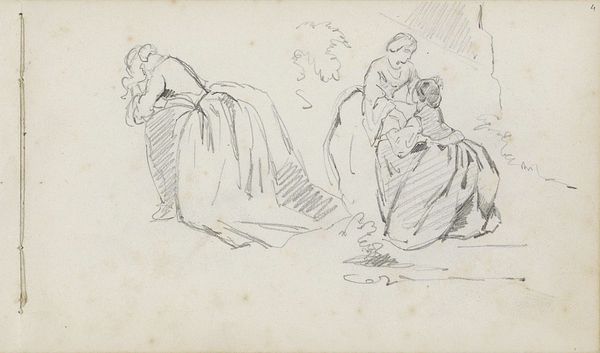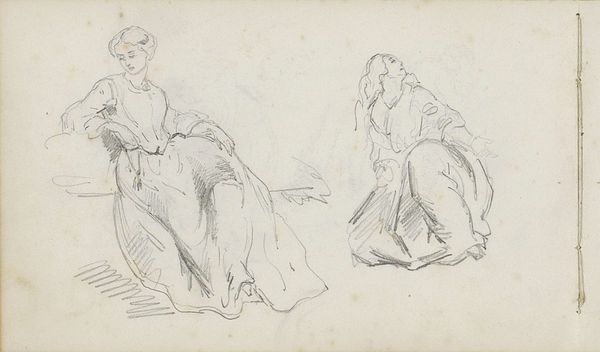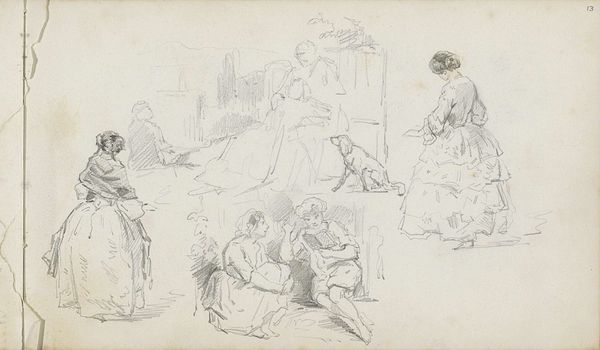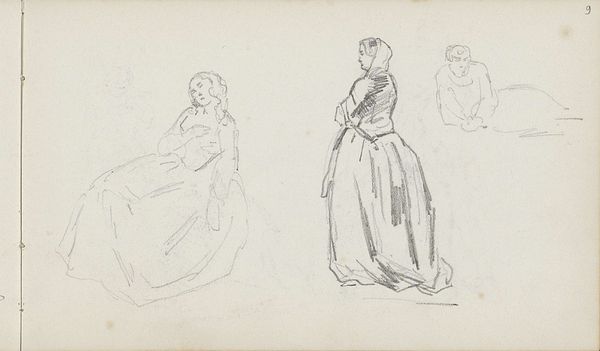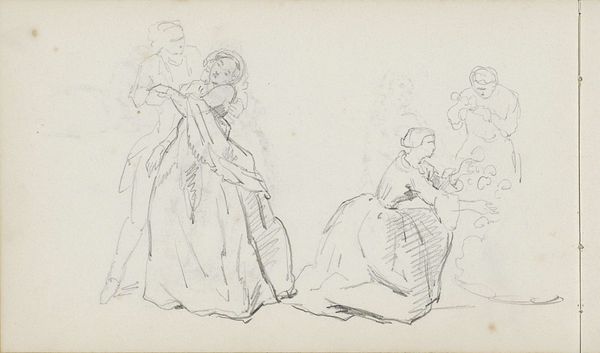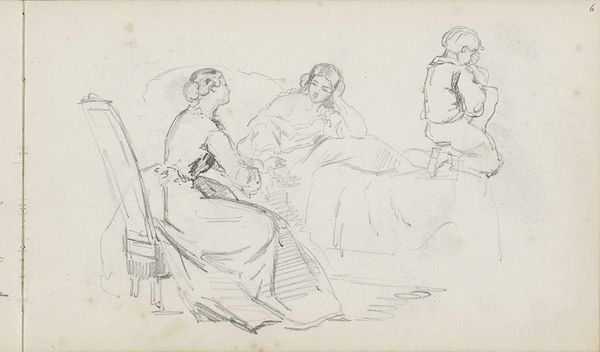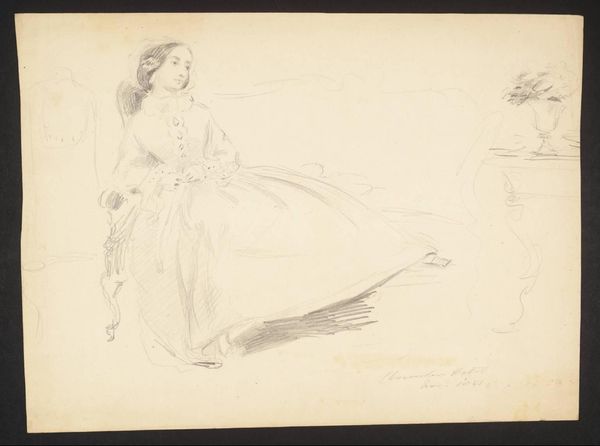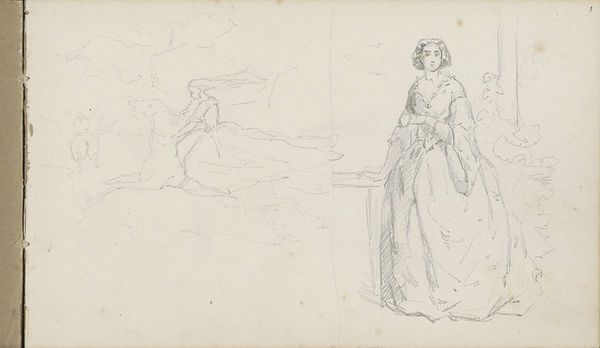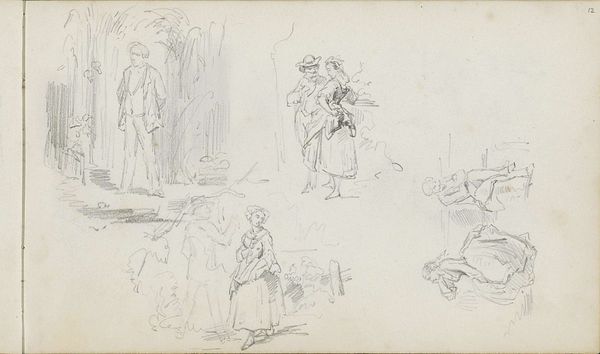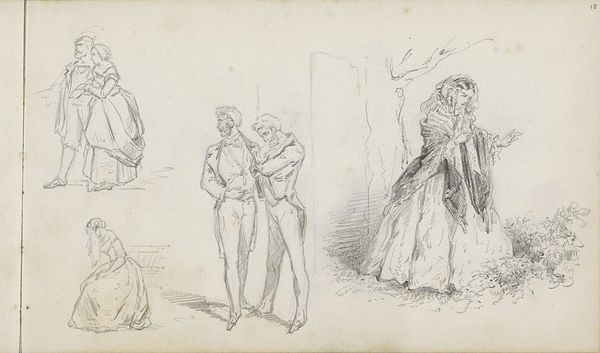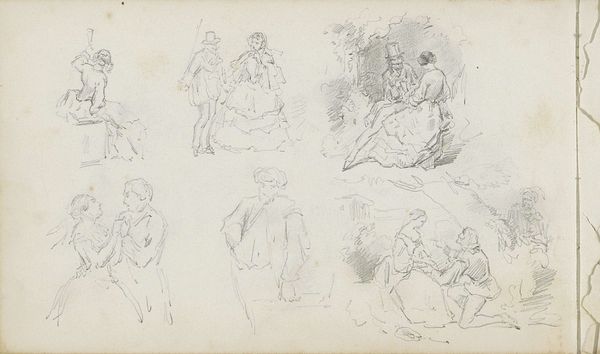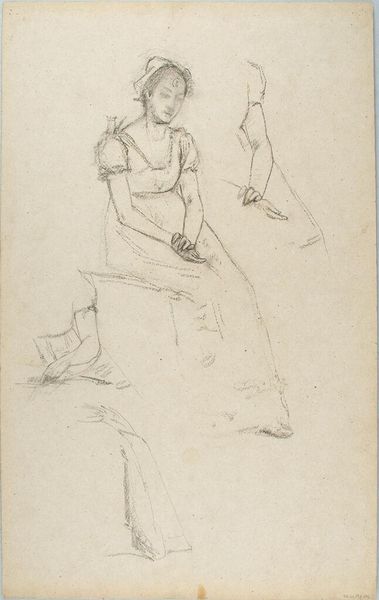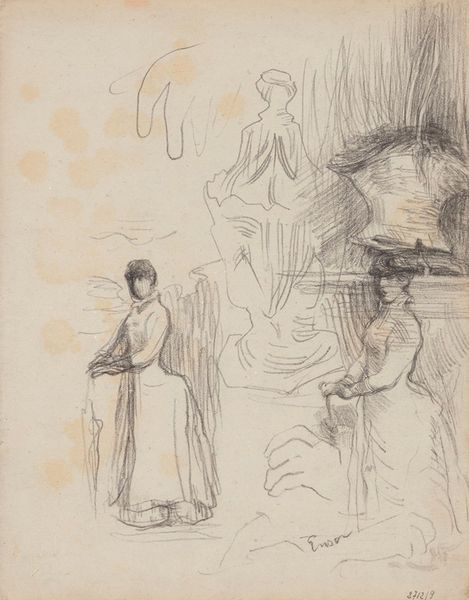
drawing, paper, pencil
#
portrait
#
drawing
#
figuration
#
paper
#
romanticism
#
pencil
#
genre-painting
Copyright: Rijks Museum: Open Domain
Editor: This is Charles Rochussen's "Standing and Seated Young Woman," a pencil drawing on paper from around 1840 to 1860. The delicate lines create a very serene feeling. How do you see the composition working here? Curator: The interplay between the two figures offers a fascinating study in contrast and form. Note how the artist utilizes the positioning of the figures, one upright and the other seated, to create a dynamic relationship within the pictorial space. Consider the negative space surrounding each figure; how does it contribute to the overall balance? Editor: It does make you look at the space around them too. Is there anything significant about the use of pencil specifically? Curator: The medium itself is crucial. Pencil allows for subtle gradations in tone and precise linework, evident in the delicate rendering of the fabric and the nuanced expressions. This medium lends itself to capturing fleeting moments and intimate observations. Do you notice how Rochussen uses hatching and cross-hatching to create depth and volume, particularly in the drapery? Editor: Yes, you can really see the texture because of that. How would you relate it to other artwork of that period? Curator: This drawing aligns with the Romantic era's interest in emotional expression and the human figure, yet it avoids dramatic gestures, focusing instead on a quieter, more introspective portrayal. We can see in it elements of realism in the representation, combined with a sensitive attention to the inner state suggested by pose and expression. What kind of emotional language do you observe? Editor: It has been really insightful to focus on the specific choices in the drawing technique. I see so much more in the detail now. Curator: Precisely! The careful orchestration of line, tone, and form yields a complex portrait. Analyzing formal qualities allow us insight, even absent definitive context.
Comments
No comments
Be the first to comment and join the conversation on the ultimate creative platform.
